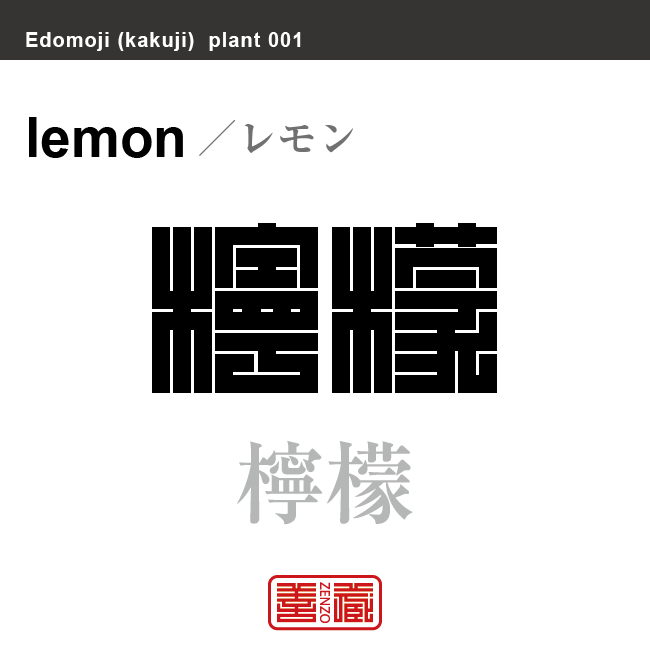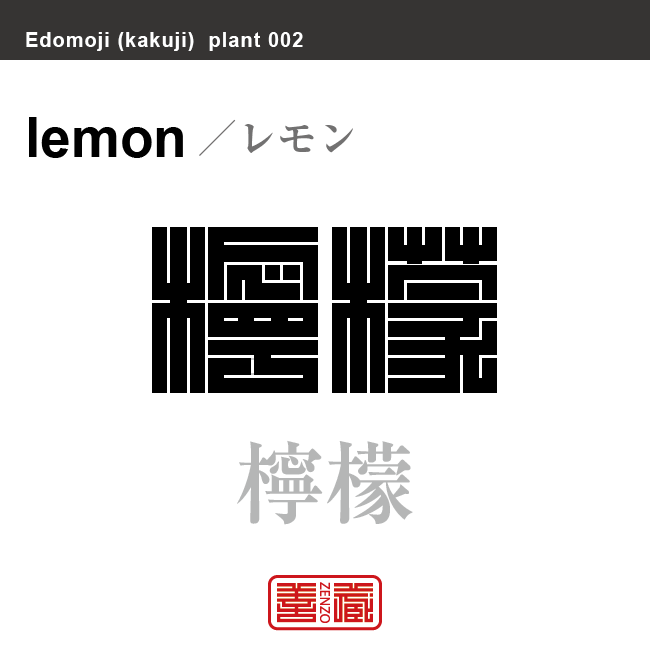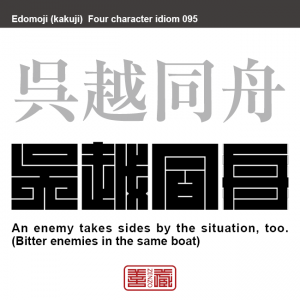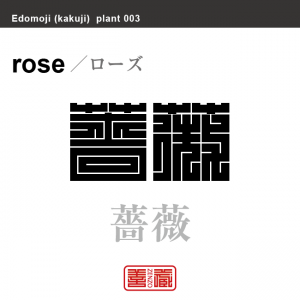檸檬 レモン 角字で花と植物の名前、漢字表記


檸檬
レモン
英語: lemon、学名: Citrus limon
Unicode: [檸_0x6AB8][檬_0x6AAC]
レモンはミカン科ミカン属の常緑低木(またはその果実を指す言葉)です。主に酸味や香りを楽しむ柑橘類です。
原産地はヒマラヤ東部、樹高は3mほど。枝には棘があり、厚みがある葉は菱形か楕円形で、縁は鋸歯状。白ないしピンクで強い香りのする5花弁の花を咲かせます。
レモンは寒さに弱く、栽培には冬暖かく、夏に乾燥する地域が適しており、大産地はイタリアやスペイン、南カリフォルニアなどの地中海性気候のところが多です。日本での栽培地は温州ミカンなどの栽培地と同じく瀬戸内海地方で栽培されることが多いです。
レモンの酸っぱさやほろ苦さは、傷心、郷愁などを連想させるためか、歌の題名や歌詞、俳句、短歌、詩などに良く取り入れられます。
角字とは?
江戸時代に誕生した角字は、正方形のグリッド内にほぼ水平・垂直のラインのみで文字(漢字)が表現されるグラフィックアートです。
正方形という限られた空間の中に、あらゆる文字を閉じ込めようとするグラフィックデザインは、前述した、ミニマムな物に対する日本人特有のこだわりが随所に感じられます。
そのシンプルで有りながら、奥深い「角字」は多くの日本人を魅了し、お祭りで着る半被や印半纏(しるしばんてん)と言われる着物や、商標、印鑑、家紋、看板デザインなどに今日まで数多く使用されてきました。
What is Kakuji?
There is a style of penmanship called “Kakuji” in Japan. Edo-born Kakuji is a graphicart that expresses letters (kanji) with almost horizontal and vertical lines only.
The design which bases on many straight lines seems simple, or too plain even at its first glance; yet this beautiful artistic penmanship that encompasses the aesthetic of the Japanese in the Edo era, also known as “Iki”, and playfulness has long been inherited to this day, thanks to the masteries’ long years of efforts in training and refinement.
Kakuji with its simplicity and depth is used for designs such as trademark, hanko stamp, family crest and signboard.































































 2文字コード:MZ 3文字コード:MOZ 数字:508 ITU:258 ccTLD:.mz
2文字コード:MZ 3文字コード:MOZ 数字:508 ITU:258 ccTLD:.mz







































































































































